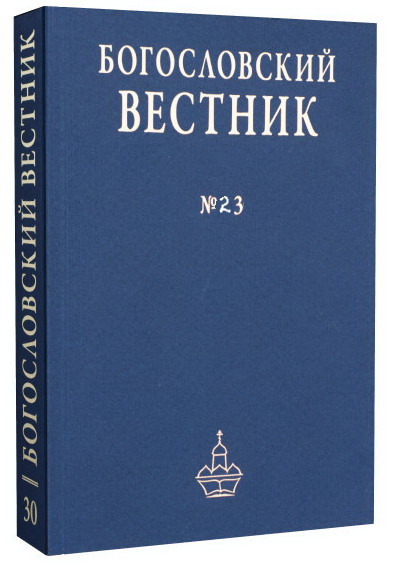The imagery of royal power in Byzantine Greek ascetic literature: A comparison of the images of the «king» and «lament» in the writings of St. Symeon the New Theologian and their context
DOI:
https://doi.org/10.31802/2500-1450-2015-18-19-136-167Keywords:
king, kingdom, monk, mourning, humility, Byzantium, virtue, suffering imageAbstract
The author offers insights in royal power and its inner spiritual as seen by hermit monks and Christian writers of an ascetic-mystical trend in contrast to the excessive politicization of this topic. This is the first ever attempt to organize according to concrete criteria the mention of imperial power and its regalia in Greek ascetic literature. The main theme – a comparitive analysis of «lamentation» and «the king» in the fourth «Catechetical word» of the Venerable Symeon the New Theologian and the identification of the context of this comparison in the culture, ascetic tradition and history of Byzantium. The king, who wears the white robe as a sign of mourning, and the tradition of the king’s lament for his family and the people’s lament for the king – have a number of specific descriptions in the monuments of, especially, historical literature. These descriptions are a vivid background for the study of lament as a key virtue of Christian asceticism. A study of the wars that were led by a contemporary of St. Simeon – Emperor Basil Bulgaroctonus, is presented as a dynamic representation of the environment and the atmosphere, which could have inadvertently fueled the sublime ideas of one of the greatest mystics of the Church. Also, the posthumous fate of the remains of Emperor Basil during the destruction of Constantinople by the Crusaders in the XIII century is one of the most striking images that illustrate the main subject of the article, the main task of which is to awaken interest in the history and the ascetic tradition of the Church.
Downloads
References
Аваряскина Т. В. Плач в социокультурном пространстве повседневности (на материале русской культуры). Тюмень, 2009. Автореферат.
Грабар А. Император в византийском искусстве. М., 2000.
Дагрон Ж. Император и священник. Этюд о византийском «цезарепапизме» / А. Мусин, пер. СПб., 2010.
Дионисий (Шленов), игумен. Учение прп. Симеона Нового Богослова и прп. Никиты Стифата о прижизненном воскресении души (в печати).
Епифаний (Евфивулос), архим. 2012 – Епифаний (Евфивулос), архим. Путь слез по творениям святого Симеона Нового Богослова. Святые отцы о плаче и сокрушении. М., 2012.
Злыднева Н. В. Белый цвет в русской культуре XX века // Признаковое пространство культуры. М., 2002. С. 424–431.
Кременецкий П. Христианское учение о царской власти и об обязанностях верноподданных. Мысли, вкратце извлеченные из проповедей Филарета, митрополита Московского. М., 1906.
Михайлова И. Б. И здесь сошлись все царства… Очерки по истории государева двора в России XVI в.: повседневная и праздничная культура, семантика этикета и обрядности. СПб., 2010.
Невярович В. К. Благословенно царство… Церковные основы монархической идеи в России. СПб., 2004.
Савва В. Московские цари и византийские василевсы. К вопросу о влиянии Византии на образование идеи царской власти московских государей. Харьков, 1901.
Сквирская Т. З. Плач и покаяние в древнерусских песнопениях. СПб, 1993.
Царь как помазанник Божий (Коронация русских царей) // Вера, царь, отечество / К. Тихомиров, ред. М., 1894.
Трепавлов В. В. «Белый царь». Образ монарха и представления о подданстве у народов России XV–XVIII вв. М., 2007.
Успенский Б. А. Царь и патриарх. Харизма власти в России (Византийская модель и ее русское переосмысление). М., 1998.
Успенский Б. А. Царь и император. Помазание на царство и семантика монарших титулов. М., 2000.
Щедрина К. А. Царей держава. Значение реликвий и символов Святого Креста и Страстей Христовых в церковном освящении государственной власти. М., 2000.
Failler A. Georges Pachymérès. Realtiones historiques. I. Livres 1–3 / A. Failler, éd.; V. Laurent, trad. Paris, 1984 (CFHB. Series Parisiensis 24).
Hausherr I. Penthos. La doctrine de la componction dans l’Orient chrétien. R., 1944 (OCA 132).
Head C. Imperial Byzantine Portraits: A Verbal and Graphic Gallery. New York, 1982.
Hilsdale C. J. Byzantine Art and Diplomacy in an Age of Decline. Corwall, 2014.
Καραγιαννόπουλος I. Το Βυζαντινό κράτος. Θεσσαλονίκη, 1996.
Kelsey E. Byzantine Emperors and Old Testament Kings: Contextualizing the Paris Psalter as a Product of Ninth and Tenth Century Byzantine Imperial Ideology. Summer Research. Paper 131. 2011.
McGuckin J. Symeon the New Theologian (d. 1022) and Byzantine monasticism // Mount Athos and Byzantine monasticism. Papers from the 28 spring Symposium of Byzantine Studes / A. Bryer, Anthony; M. Cunningham, ed. L., 1996. P. 17–35.
РУССКИЕ ПЕРЕВОДЫ
Аввы Дорофея дущеполезные поучения и послания с присовокуплением вопросов его и ответов на оные Варсануфия Великого и Иоанна Пророка. М., 2000.
Георгия Пахимера история о Михаиле и Андронике Палеологах тринадцать книг / Карпов. ред. СПб., 1862. Т. 1: Царствование Михаила Палеолога 1255–1282.
Розен В. Р. Император Василий Болгаробойца: Извлечения из летописи Яхъи Антиохийского. СПб., 1883.
Феофан Затворник, свт. 1890 – Симеон Новый Богослов, преп. Творения / еп. Феофан, пер. Т. 2. М. 1890 (СТСЛ, r1993).
Никита Стифат, прп. Жизнь и подвижничество иже во святых отца нашего Симеона Нового Богослова, игумена монастыря святого Маманта Ксирокерка [Л. А. Фрейберг, пер.] // Преп. Симеон Новый Богослов, преп. Никита Стифат. Аскетические произведения в новых переводах / иг. Иларион (Алфеев), ред. СПб., 2009. C. 97–222.
Шалфеев П. Римская история Никифора Григоры, начинающаяся со взятия Константинополя латинянами. Т. 1. (1204–1341) / П. Шалфеев, пер. [с изменениями П. Кузенкова]. СПб., 1862.
Downloads
Published
How to Cite
License

This work is licensed under a Creative Commons Attribution-ShareAlike 4.0 International License.








